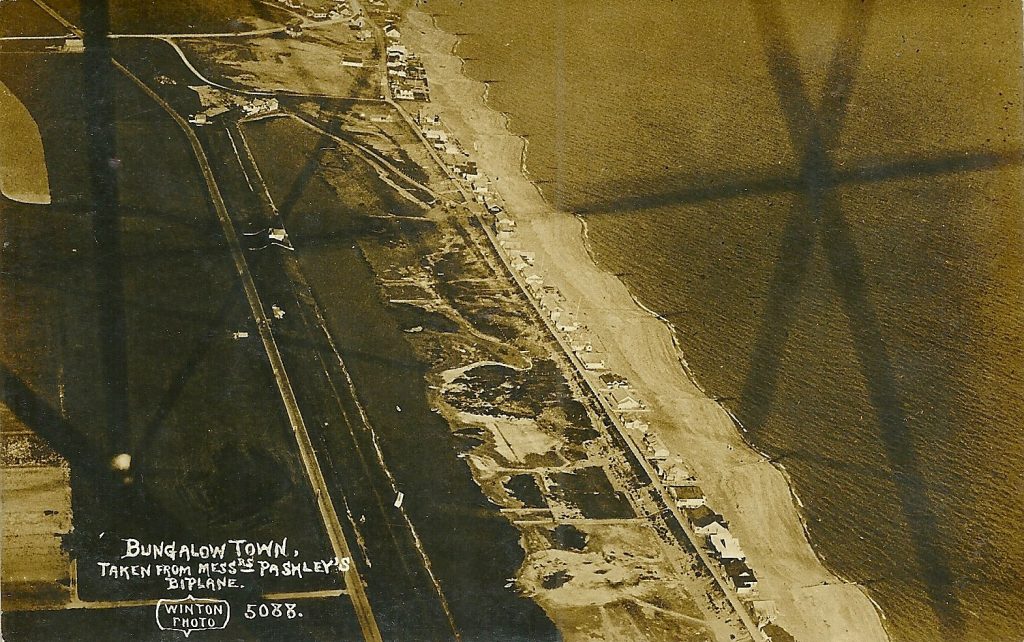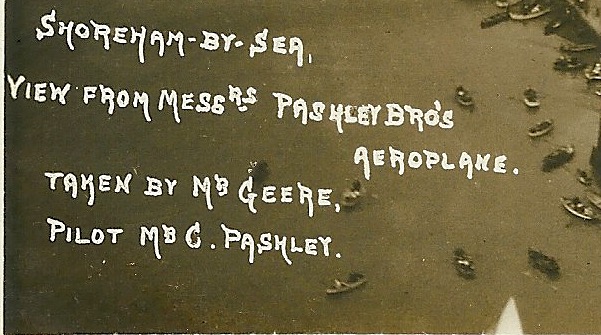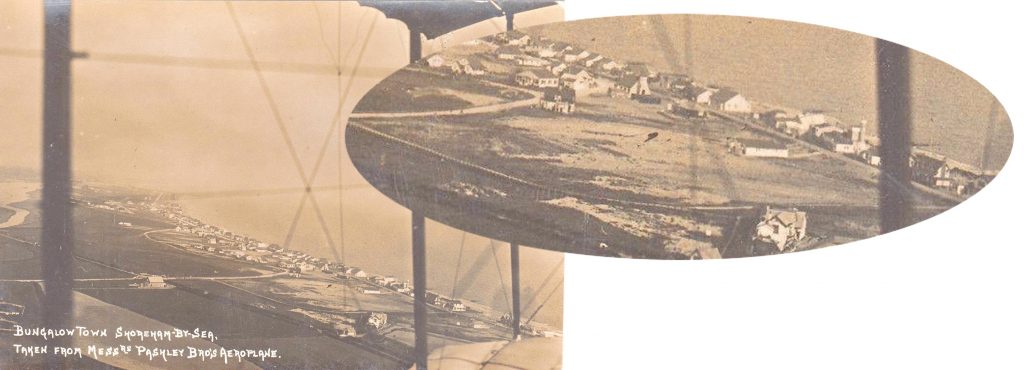A collection from Alex Robertson. The early days of aviation at Shoreham.
For a detailed article on the earliest days of aviation at Shoreham visit here.
For a graphical timeline of the expansion of the aerodrome site visit here.
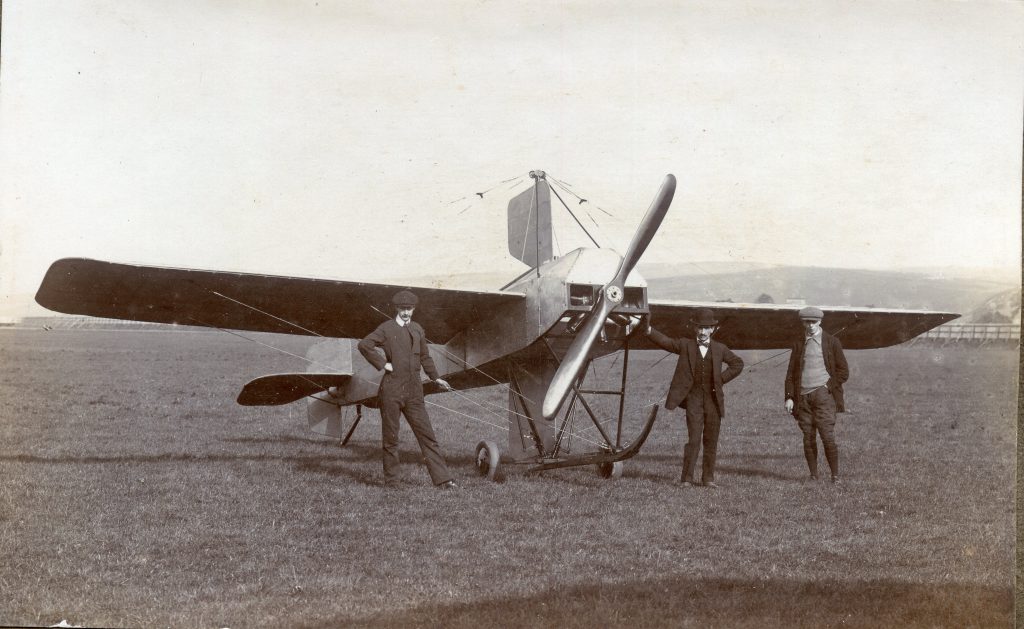
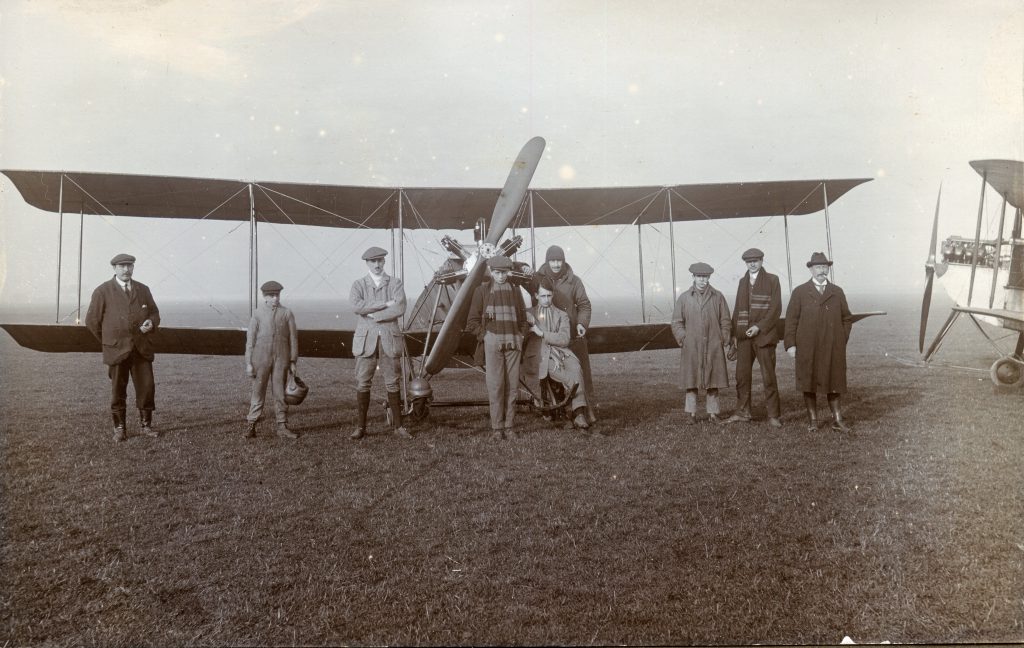
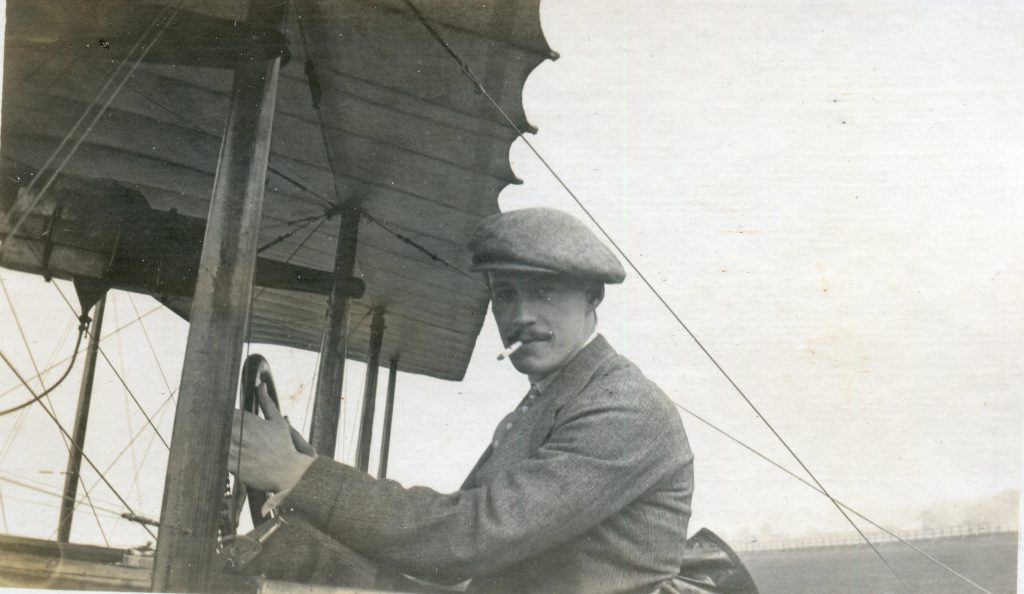
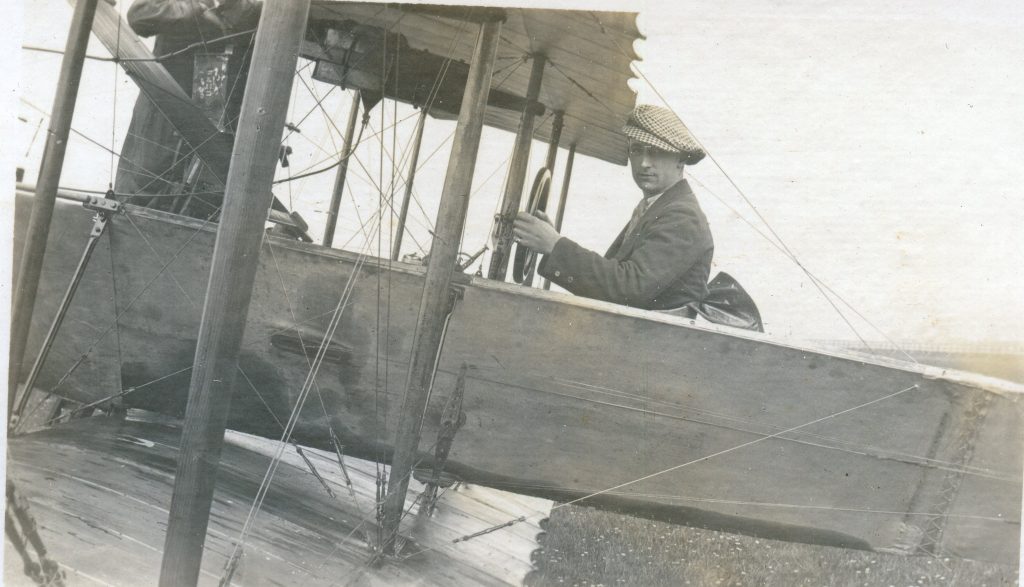
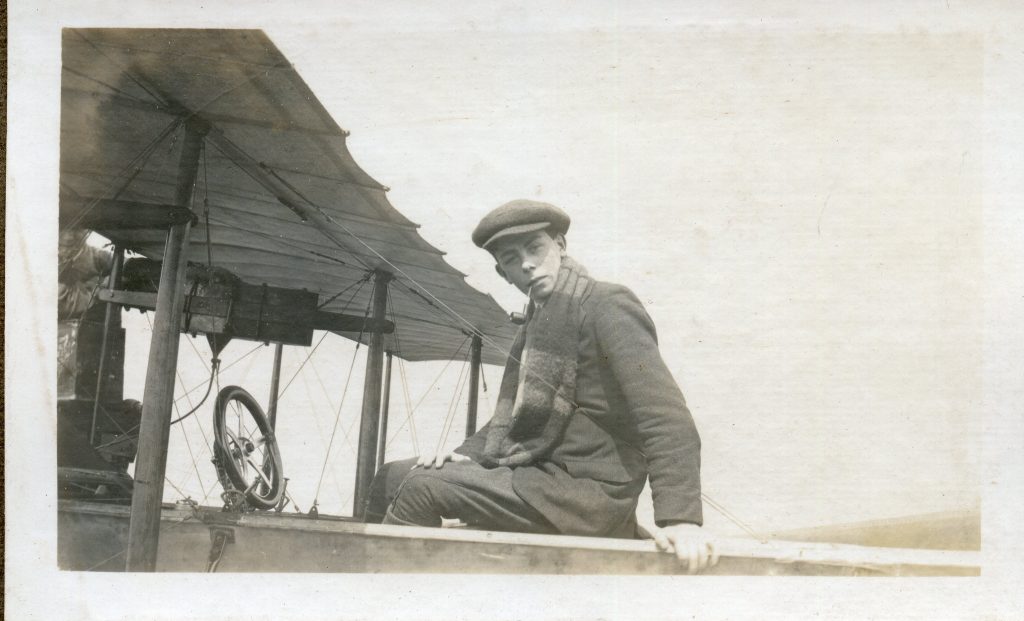
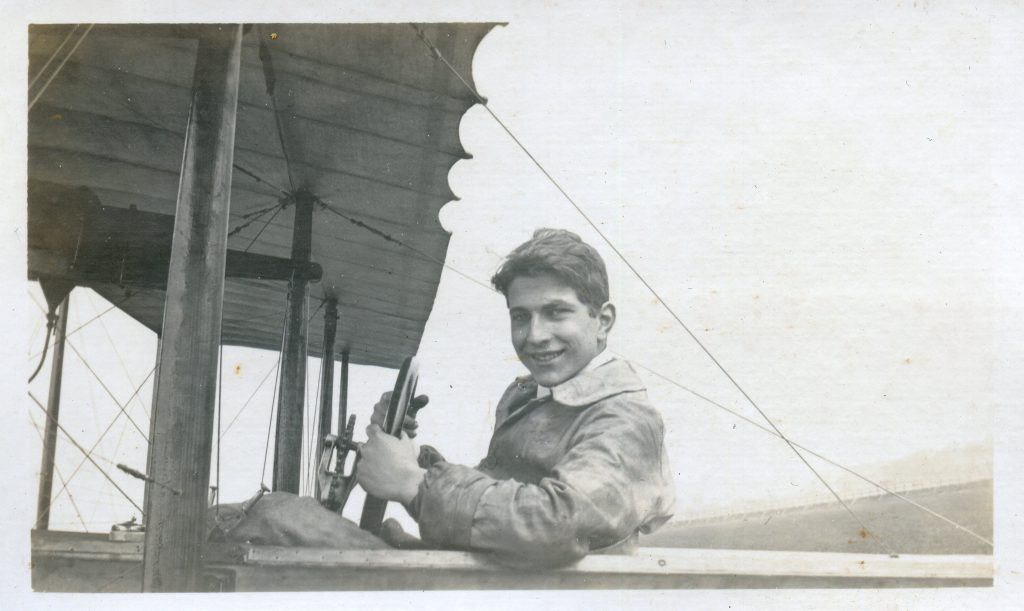
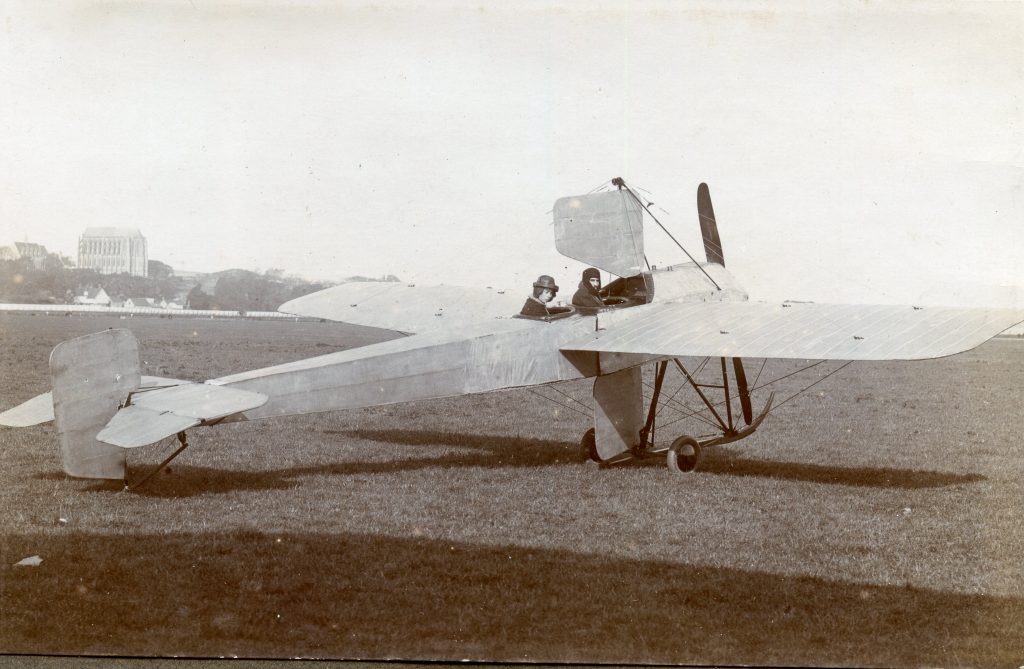
A collection from Alex Robertson. The early days of aviation at Shoreham.
For a detailed article on the earliest days of aviation at Shoreham visit here.
For a graphical timeline of the expansion of the aerodrome site visit here.







Nelson writes:
It’s been some time since I last saw this photo and don’t think it has ever appeared on our forum before – even if it has it is probably worth another look.
Lancing Clump in the background. Decorative board on the left probably advertising a new estate of houses and behind it the intended buildings have been staked out. In the centre is what appears to be a tractor surrounded by debris ……. until you realise the tractor has a propeller attached to it and uniformed (RAF?) men clamber on the wreckage to load broken aircraft wings on to a lorry. The aircraft looks much like an Airco DH9A used by the RAF from 1918 to 1931 that has come down in Lancing on an approach to the airport.
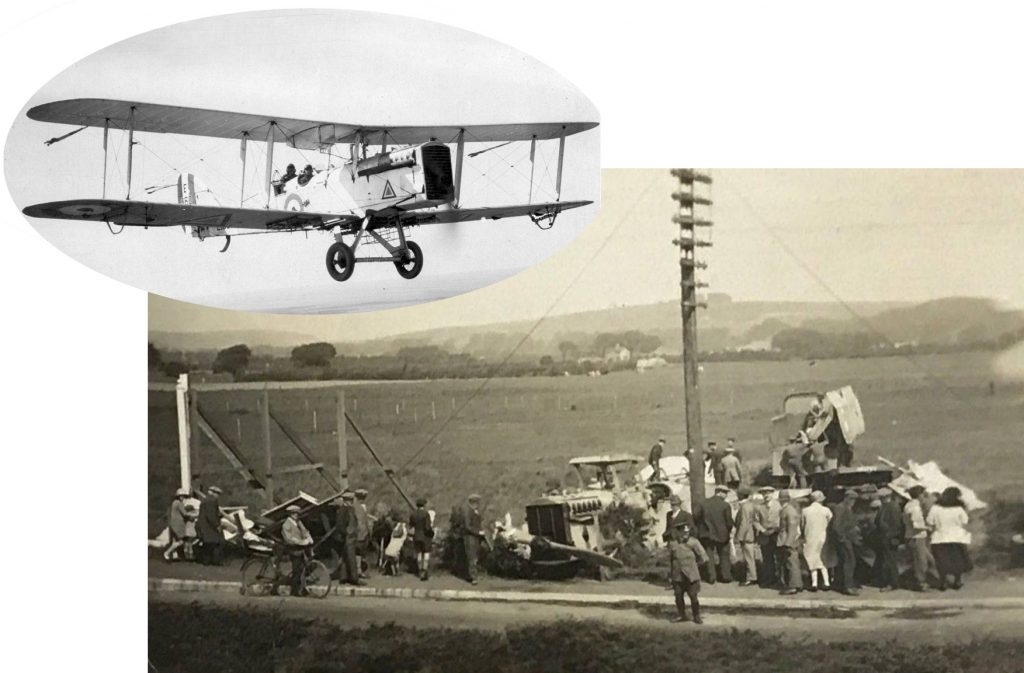
Lofty writes:
In the early hours of the morning on Saturday 3rd November 1923, two spritsail barges were wrecked near the harbour entrance in stormy conditions.
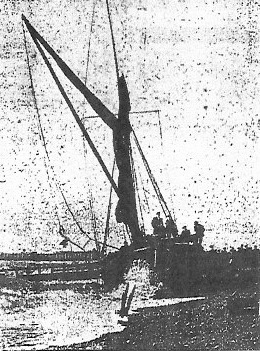
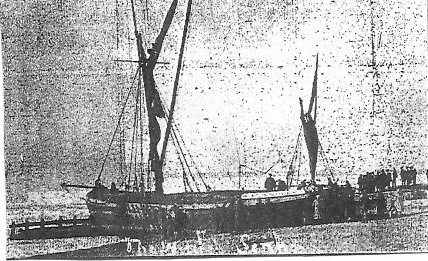
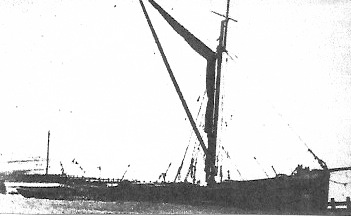
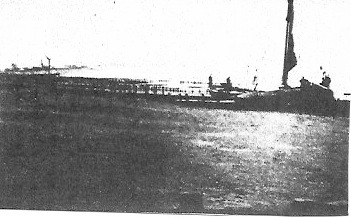
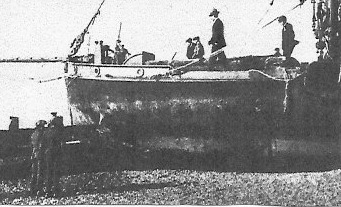
A postcard that shows a fairly usual view west of the beach end of Ferry Road but one that unusually includes the old lifeboat house that stood there next to the coastguard cottages up to the 1920’s. On the extreme right of the card marked by the asterisk more bungalows nearer to the sea are just visible that were built after 1912 and narrows the probable date of the card.
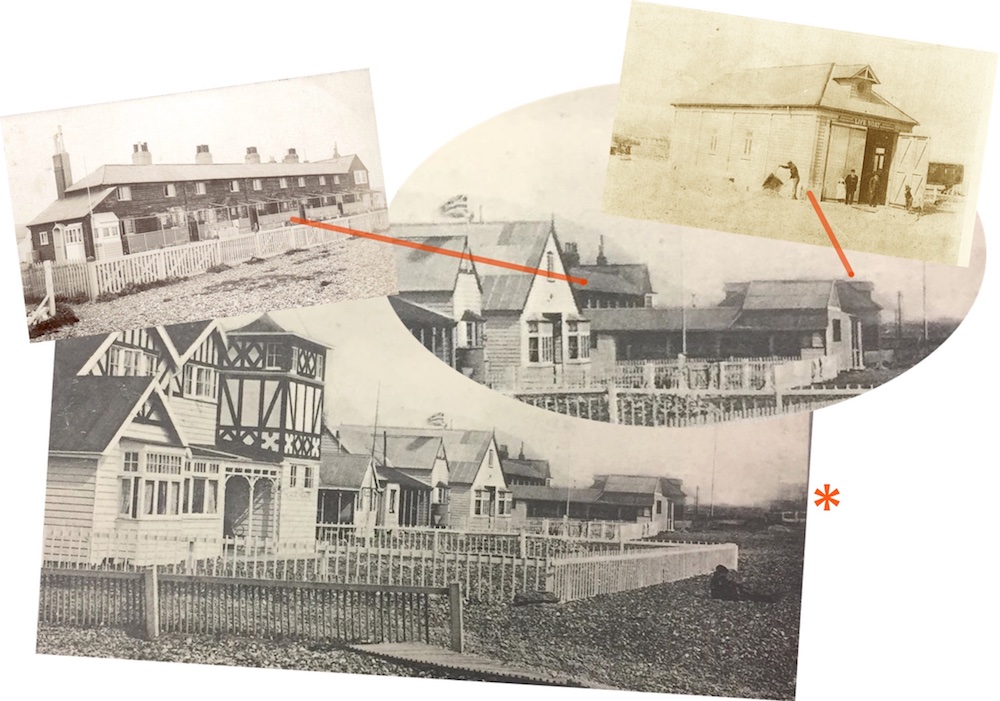
A photo that unusually records both the grounded SS Brussels and the last of the two mystery towers before it was demolished – July 1922
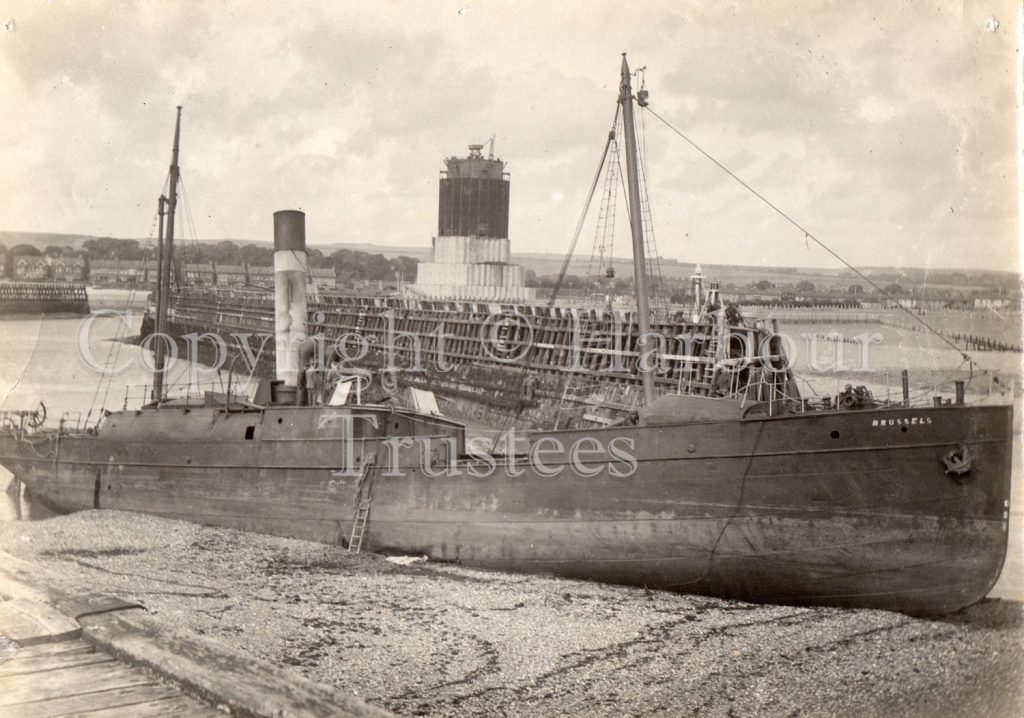
The lifeboat house and lifeboat had been moved to the beach in 1892 after the build up of the bar had prevented the lifeboat from leaving the harbour. They were returned to Kingston after the bar had been cleared and after that photo was taken. Holloways of Shoreham were involved in harbour reclamation work in 1925 which seems likely to have included clearing the bar.
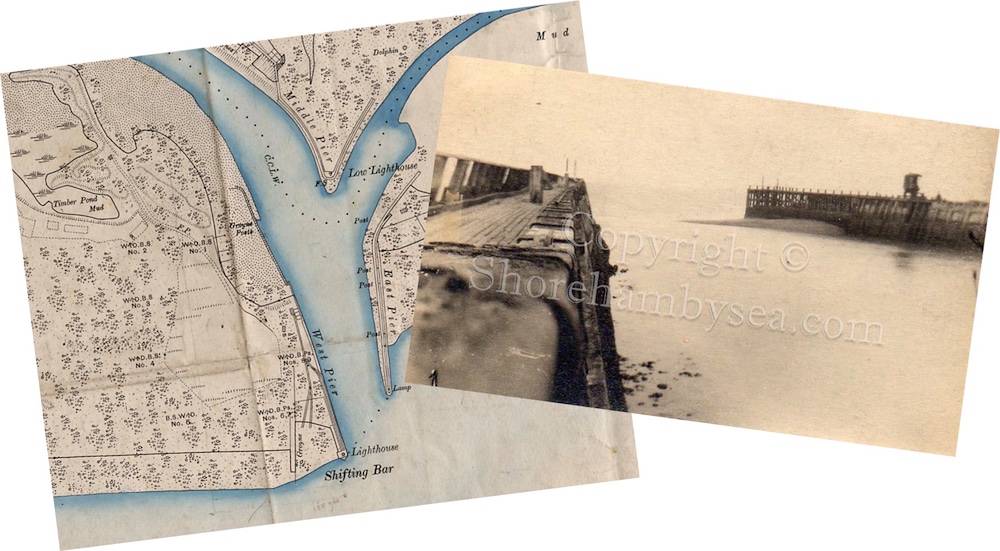
Hadfield’s advert featuring early 1900’s Old Shoreham farmer William Norman and his massive mangolds! In 1910 another Shoreham character that featured in an advert was Myrtle Winton who’s husband Reg Eley ran a motor cycle business in Shoreham. This over-pasted and grubby insertion from the ‘Motor Cycle’ magazine in the Winton family scrap book is nevertheless an interesting relic perhaps.
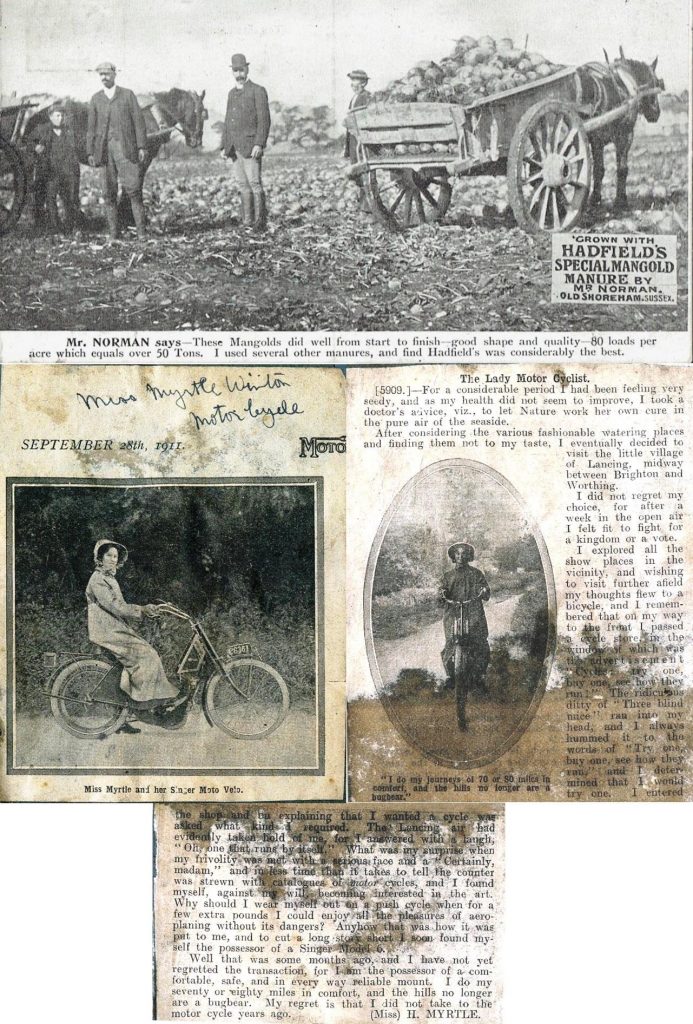
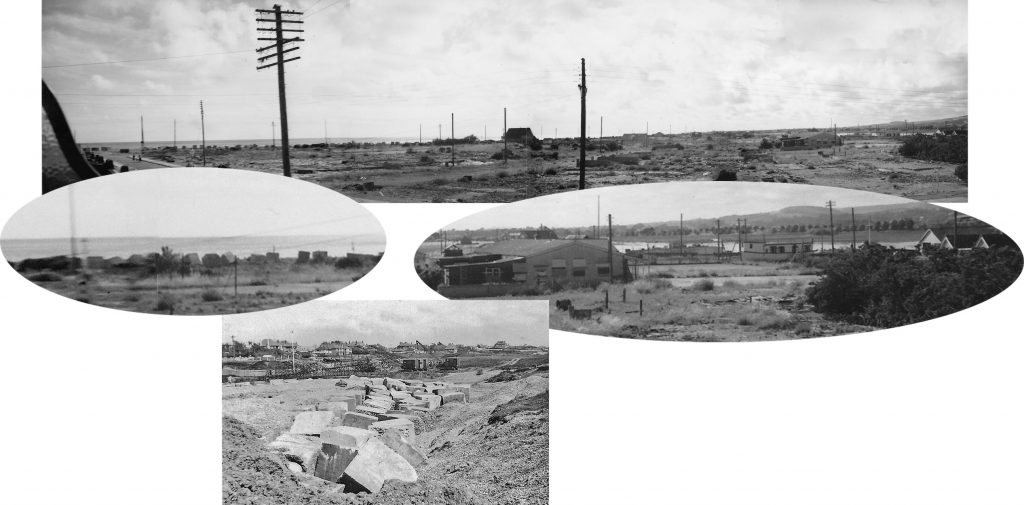
An interesting panorama of four photos sent to us by Chris Mead. Taken by his father in 1946 from one of the flats above the shops in Ferry Road it looks out westwards across a barren landscape following the wartime clearance of most of the bungalows. Amongst those that survived were West and East House(s) on the extreme right. Just beyond the old sports club are two house boats, the one on the right is Skylark and to the left of it is what looks like an MTB that to me is very similar to one that survived until recent years – perhaps someone remembers it’s name?
Why were the two bungalows in the centre of the view left untouched I wonder? The smaller one was named ‘Barge’ but the larger doesn’t appear to have been named and is just noted as No. 81 on the BT Properties list.
Lastly, along the shore can be seen the anti-tank blocks that were removed a few years later – the lower photo of blocks at Lancing gives an idea of them closer up.
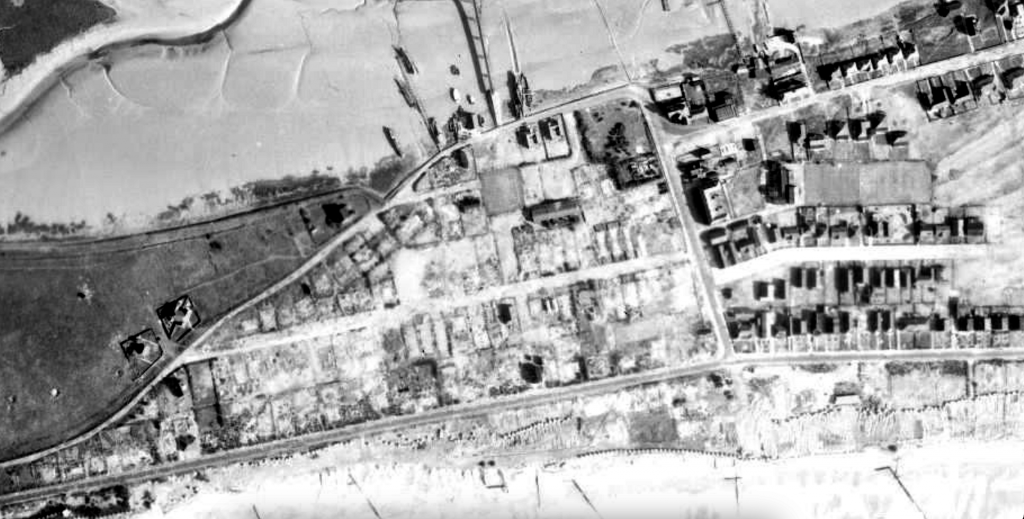

Never really considered the age of this photo too much before but on looking closely it shows The Church of the Good Shepherd (1913) but no film studio (1915) added to which the Pashley brothers finally closed their flying school at Shoreham in December 1914. Perhaps the earliest aerial photo of Shoreham?
